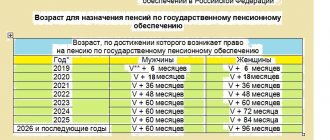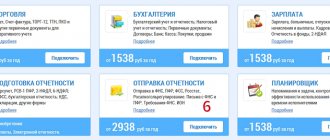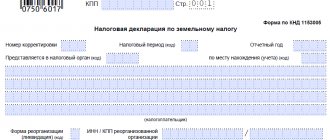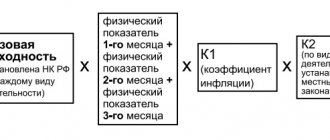Water intake
If you use a water body to collect water, the tax base corresponds to the volume of water collected per quarter. Determine the volume based on the data from the measuring instruments. Record the same readings in the primary water use log. The form of the journal was approved by order of the Russian Ministry of Natural Resources dated July 8, 2009 No. 205.
But what if there are no water measuring instruments? Then determine the volume of water based on the actual operating time and productivity of the technical equipment. For example, when water is collected by a pump, the tax base depends on the pump’s performance (the volume of water taken per unit of time) and its operating time. Also take into account the height of the water rise (water column), its characteristics, which depend on time and depth, as well as the condition of the well.
If it is impossible to determine the volume using this method, use water consumption standards. The limit is specified in the license. It is established for each water body and purpose of use.
Such rules are contained in paragraph 2 of Article 333.10 of the Tax Code of the Russian Federation.
Where to pay and how to calculate water tax
Water tax is a payment at the federal level. Payment is made at the location of the water use facility.
The water tax is calculated in relation to four types of water use:
- water intake;
- use of the water area (excluding timber rafting);
- use of hydropower resources;
- timber rafting
They have different calculation bases and different tax rates.
The basis for water intake is its actual volume. The basis for the use of a water area is determined by the area of use of this water area. The hydropower base is the volume of electricity generated. The timber rafting base is a calculated value depending on the volume of rafted timber and the rafting distance.
The basic rates of water tax by type of water use are indicated in paragraph 1 of Art. 333.12 Tax Code of the Russian Federation. Since 2015, they have been subject to an increasing coefficient established by clause 1.1 of Art. 333.12 of the Tax Code of the Russian Federation for the period 2015–2025.
A complete list of water tax rates is available in ConsultantPlus. Get free demo access to the K+ system and go to the directory.
In addition, additional multipliers may be applied to bets in the following cases:
- for above-limit water intake - a 5-fold coefficient;
- lack of means of measuring the volumes of water taken - coefficient 1.1;
- abstraction of groundwater for further sale - a 10-fold coefficient.
If several coefficients are applied simultaneously, they should be multiplied. The rate obtained in this way is rounded to whole numbers.
For water withdrawal for the purpose of water supply to the population, there is a preferential rate (clause 3 of Article 333.12 of the Tax Code of the Russian Federation). The increased coefficient will not be applied to it until 2026.
The procedure for calculating water tax for all types of water use is quite simple: the tax base is multiplied by the rate adjusted by the increasing coefficient, the values of which are indicated in clause 1.1 of Art. 333.12 Tax Code of the Russian Federation. If there is a need to introduce additional increasing coefficients, then the rate is calculated taking them into account.
Use of water bodies for the purpose of rafting wood in rafts and purses
When using a water body for rafting wood in rafts and purses, calculate the tax base using the formula:
| The tax base | = | Volume of wood rafted in rafts and purses (thousand cubic meters) | × | Rafting distance (km) : 100 |
This procedure is contained in paragraph 5 of Article 333.10 of the Tax Code of the Russian Federation.
An example of calculating water tax on water intake
Let us assume that an organization has a license to withdraw water for production needs from a well located in the Pechora River basin and equipped with means of measuring water volumes. The quarterly water use limit is 320,000 cubic meters. m. The organization collected 360,000 cubic meters in the first quarter of 2021. m of water. Let's calculate the amount of water tax for the 1st quarter of 2021.
During the quarter, the organization allowed an excess amount of water to be withdrawn. Its value is:
360,000 - 320,000 = 40,000 cubic meters. m.
Due to the presence of an excess volume, the tax will consist of two components:
1. In terms of volume within the limit, the tax will be:
320,000 cu.m. m × 300 rub. / 1,000 cubic meters m × 2.31 = 221,760 rub.,
Where:
320,000 cu.m. m - volume of water within the water use limit;
300 rub. - the rate established by sub. 1 clause 1 art. 333.12 Tax Code of the Russian Federation for 1,000 cubic meters. m volume of water taken;
2.31 - coefficient applied to the rate for 2021 in accordance with clause 1.1 of Art. 333.12 Tax Code of the Russian Federation.
2. For volumes exceeding the limit, the tax will be:
40,000 cu.m. m × 300 rub. / 1,000 cubic meters m × 2.31 × 5 = 138,600 rub.,
Where:
40,000 cu.m. m - volume of water in excess of the limited value;
300 rub. - the rate established by sub. 1 clause 1 art. 333.12 Tax Code of the Russian Federation for 1,000 cubic meters. m volume of water taken;
2.31 - coefficient applied to the rate for 2021 in accordance with clause 1.1 of Art. 333.12 Tax Code of the Russian Federation;
5 - coefficient applied to the rate for over-limit volume in accordance with clause 2 of Art. 333.12 Tax Code of the Russian Federation.
Thus, for the 1st quarter of 2021, the organization will have to pay to the budget an amount of water tax equal to:
221,760 + 138,600 = 360,360 rub.
Tax rates
Water tax rates are listed in Article 333.12 of the Tax Code of the Russian Federation. They are different and depend on:
- from the object of taxation;
- from river basins, lakes, seas;
- from economic regions.
See the table for a list of all possible bets.
If different rates are established for one water body, determine the tax base separately for each rate. For example, if an organization collects water from the Volga River in the Northern and Northwestern economic regions, the tax base must be calculated separately. Despite the fact that there is only one water body - the Volga River, different water tax rates apply in these areas.
This is indicated in paragraph 1 of Article 333.10 and subparagraph 1 of paragraph 1 of Article 333.12 of the Tax Code of the Russian Federation.
Please note that a coefficient is applied to water tax rates. Its size is set for each year. For example, in 2016, bets are applied with a coefficient of 1.32.
In addition, rates need to be increased additionally in two cases .
The first is when drawing water:
- by a factor of 1.1, if you do not have special instruments to measure the amount of water that is withdrawn from the water body;
- five times for an over-limit fence.
The second is for the extraction of groundwater for its processing, packaging and sale by a factor of 10. This case does not apply to the extraction of industrial, mineral and thermal waters.
Such rules are provided for in paragraphs 1.1, 2, 4 and 5 of Article 333.12 of the Tax Code of the Russian Federation.
When multiplying bets by odds, round them to the nearest ruble. This is stated in the letter of the Federal Tax Service of Russia dated January 22, 2015 No. GD-4-3/721.
Deadlines for calculation and payment of water tax
The water tax report is quarterly, and the tax is also calculated quarterly, taking into account the data generated over the last 3 months.
The amount is calculated directly in the tax return, which is submitted to the Federal Tax Service no later than the 20th day of the month following the reporting quarter. Tax payments are also made within the same time frame. If there is no object of taxation, then the obligation to file a declaration does not arise in this case (letter of the Ministry of Finance of Russia dated June 23, 2016 No. 03-02-08/36474).
Find out how to calculate and pay water tax from a typical situation from ConsultantPlus. If you do not have access to the K+ system, get a trial online access for free.
For information about what other report is generated in connection with water use, read the material “Procedure and sample for filling out the 2-TP Vodkhoz form (nuances).”
Tax calculation procedure
The water tax is calculated based on established rates, but also taking into account approved increasing factors. The size of these indicators changes annually until 2025. When calculating the tax for 2021, the coefficient should be 1.32, for 2021 - 1.52.
Additional coefficients are also applied for the following water intake actions:
- A 5-fold calculation is established when the withdrawal limit is exceeded;
- 10-fold is introduced when withdrawing groundwater for the purpose of sale;
- 10% is taken into account additionally if there are no measuring instruments for collection.
The final water tax is calculated taking into account all existing coefficients.
Example. The organization is engaged in the extraction of underground water for the purpose of further sale in the Northern Economic Region in the Volga River basin. The volume of intake in the 2nd quarter amounted to 24 thousand cubic meters. Calculate the amount of tax due.
The initial rate for water intake according to the initial data is 384 rubles per 1000 cubic meters. It is also necessary to take into account the following increasing factors: 10-fold when water is withdrawn for the purpose of sale and 1.32, valid in 2021. The total tax amount is 384*24*1.32*10= 121,651 rubles.
How to calculate
Calculating the amount of water tax online is a simple task if you have all the data for this procedure. But using an online water tax calculator is complicated by the fact that it does not have a uniform rate and base. They are determined by several parameters:
- features of the structure that uses water;
- its dislocations;
- type of reservoir used and water use;
- method of fluid collection (ground or underground);
- other factors.
From here, several algorithms appear that allow you to determine the tax rate. Since the full list of rates is quite voluminous, you can familiarize yourself with it in Art. 333.12 of the Internal Revenue Code.
Calculation example
Calculating water tax using an online calculator is much easier than doing it yourself. For example, we need the following indicators:
- Volume of water resources. During the quarter, 35 thousand cubic meters were used (data was measured independently).
- Regional rate. For example, let's take 348 rubles per thousand cubic meters.
- With correction factor. 35 * 348 * 2.21 = 26,917 rubles.
That is, you need to pay 14,007 rubles. But this is if the limits were not violated. If the excess is 5 cubic meters, the water tax calculator in 2021 is already outdated, and in 2021 the following format will be used:
Tax = (32* 348 + 3* 348* 5)* 2.21 = 36,146 rubles.
Penalties for water tax will be accrued if funds are not paid by the 20th day of the next month after the reporting quarter. Penalties are calculated automatically, but it is advisable not to delay their payment. If you realize that there was an error when paying the tax, which triggered the accrual of a penalty, you need to use the tool of the Pravio website as quickly as possible and find out its exact amount.
Water tax payers
In order to be considered water tax payers, economic entities must engage in certain activities. In this case, the activity must be licensed in accordance with the legislation of the Russian Federation. Other work related to water use is not subject to the taxation under consideration.
Water tax payers use water resources as follows:
- use of water area (water area) with the exception of timber rafting;
- timber rafting;
- obtaining resources for hydropower purposes;
- water intake.
Entities operating on the basis of issued licenses in accordance with the previous edition of the Water Code of the Russian Federation, which has become invalid since 01/01/2007, are also recognized as payers.
Organizations and individual entrepreneurs engaged in types of water use, including the following, are not considered as tax payers:
- Activities directly related to water. This includes fish farming, shipping, some types of construction, irrigation and others.
- If the types of work are subject to other taxes (extraction of mineral and thermal waters).
- Water protection measures.
- Preferential types of activities include defense needs and fire safety.
Since 2007, surface water use activities are not subject to licensing. Such work can be carried out under concluded water use agreements or decisions received.
Water tax 2021: rates
Article 333.12 establishes water tax rates in 2020; The table of basic tariffs in paragraph 1 of this article is differentiated:
- separately for each type of water use;
- depending on the economic region;
- along river basins, lakes and seas.
If water is withdrawn in an amount exceeding established water use limits, then the tariff increases five times.
A separate tariff has been established for water supply to the population. It is revised every year. In 2021, it is 122 rubles per thousand cubic meters of collected resources.








